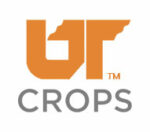LINKS
Scouting Insects
Scouting Insects in Cotton (W128) – Printer Friendly PDF
Common Insect and Mite Pests of Cotton – Narrated PowerPoint Presentation
Insect populations vary from year to year and field to field during the growing season. All fields should be monitored for insect pests and beneficial populations at least weekly during the season, preferably twice weekly after blooming has begun. In areas of high insect pressure or increasing populations, twice-a-week scouting is recommended. Monitoring plant growth and development is an important aspect of crop management, maximizing yield potential and managing insects.
The economic threshold (ET) is defined as the pest population level at which control should be initiated to keep the pest population from reaching economically damaging numbers. Insecticide applications are generally unnecessary if one or more pests are not exceeding the ET. Although economic thresholds have been established for specific insect pests, multiple pest thresholds are not well established. When losses from multiple pests are occurring, fixed individual pest thresholds may become dynamic or change. Monitor fruit retention and damage levels weekly, along with insects.
A cotton scouting form (F629) developed by the University of Tennessee is available from local county extension offices. Decisions to apply controls should be based on thorough scouting and identification of pests, cost of insecticide, the price of cotton, yield potential, and fruit retention goals. Scheduled insecticide sprays should generally be avoided. Applications of insecticides on an as-needed basis will preserve beneficial insects, reducing the likelihood of secondary pest outbreaks.
Communication and safety are important considerations to avoid accidental insecticide poisoning, heat stroke, and misunderstandings that may lead to ineffective or poorly timed insecticide applications. Scouts should be familiar with commonly used insecticides.
The table below is intended to give a general guideline of when pests normally occur in the field. Scouting intensity and methods should be selected to suit the pests most likely to occur during a given stage of crop development. For some pests, the best scouting method (e.g., sweep net, drop cloth, vs. visual sampling) may change as the crop develops. For example, the sweep net is less valuable for sampling plant bugs in cotton once boll development begins because cotton of this size is difficult to sweep. Also, the sweep net is less efficient than the drop cloth in monitoring immature plant bugs.
Stage of Plant Development
- Emergence to first square
- First square to first bloom
- After first bloom
Major Pests
- Thrips
- Plants bugs
- Bollworm, Tobacco budworm, Stink bugs, Tarnished and clouded plant bugs
Occasional Pests
- Aphids, Spider mites, Cutworms
- Aphids, Bollworm, Tobacco budworm, Spider mites
- Aphids, Loopers, Fall and Beet Armyworms, Spider Mites, Whiteflies







